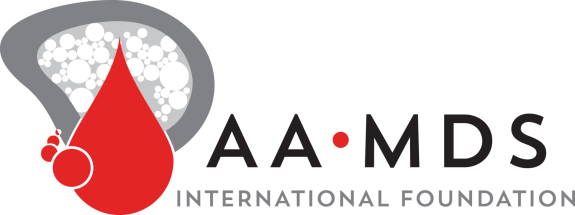
Recurrent change-of-function mutations in RNA splicing factors are frequent in patients with myelodysplastic syndromes myelodysplastic syndromes: (my-eh-lo-diss-PLASS-tik SIN-dromez) A group of disorders where the bone marrow does not work well, and the bone marrow cells fail to make enough healthy blood cells. Myelo refers to the bone marrow. Dysplastic means abnormal growth or development. People with MDS have low blood cell count for at… (MDS) and related myeloid neoplasms. Splicing factor mutations most typically occur as heterozygous mutations at recurrent ‘hotspots’ along the amino acid sequence and in a mutually exclusive manner with one another. Although much remains to be learned about how these mutations promote MDS development, recent results from our lab and others have demonstrated that cells expressing these mutations are preferentially sensitive to further alterations to the RNA splicing process.
Exploiting the selective vulnerability of splicing factor mutated myeloid neoplasms to further splicing inhibition has led to clinical development of drugs targeting core splicing catalysis by inhibiting the function of the spliceosomal SF3b complex. However, the toxicity and efficacy in patients of direct SF3B complex inhibition is not yet known. Fortuitously, mRNA splicing is highly regulated process, requiring a large number of protein complexes and post-translational modifications in addition to protein:protein and protein:RNA interactions. This provides numerous additional potential opportunities to drug the splicing process. To this end, it has recently been shown that a class of anti-cancer sulfonamides selectively degrade the accessory splicing protein RBM39 to inhibit splicing. This class of compounds has previously been administered to cancer patients prior to the discovery of the mechanism of action and their safety profile is well established.
Sulfonamides co-opt the endogenous cellular ubiquitin ligase machinery and the adapter protein DCAF15 to promote the proteosomal degradation of RBM39. Our preliminary data demonstrate that these compounds preferentially kill MDS and myeloid neoplastic cells harboring spliceosomal gene mutations and that RBM39 regulates splicing of cassette exons. Moreover, we have uncovered that there are important species-specific differences in sulfonamide efficacy, which potentially point deeper into the molecular mechanism of action of these compounds.
The goals of this proposal are now to (1) further study the preferential effects of sulfonamides in preclinical models of MDS based on the presence or absence of spliceosomal gene mutations, (2) clarify the precise residues of DCAF15 required for sulfonamide-induced RBM39 degradation, and (3) further understand the role of RBM39 on splicing and the effects of RBM39 versus SF3B1 inhibition on splicing. Given the known safety profile of sulfonamides in patients, our proposal has immediate translational importance for patients with MDS.
We have shown that a class of novel anti-cancer drugs, called the “sulfonamides”, are safe and effective in targeting a protein in myelodysplastic syndromes myelodysplastic syndromes: (my-eh-lo-diss-PLASS-tik SIN-dromez) A group of disorders where the bone marrow does not work well, and the bone marrow cells fail to make enough healthy blood cells. Myelo refers to the bone marrow. Dysplastic means abnormal growth or development. People with MDS have low blood cell count for at… (MDS) and acute myeloid leukemia acute myeloid leukemia: (uh-KYOOT my-uh-LOYD loo-KEE-mee-uh) A cancer of the blood cells. It happens when very young white blood cells (blasts) in the bone marrow fail to mature. The blast cells stay in the bone marrow and become to numerous. This slows production of red blood cells and platelets. Some cases of MDS become… (AML) cells called RBM39. In our studies, the drug was able to inhibit MDS and AML growth, but left normal blood cell growth, development and function undisturbed. We also showed that MDS and AML cells which have RNA splicing factor mutations, a common class of mutations in these diseases, are especially sensitive to the sulfonamides. Given this we are planning to start a clinical trial clinical trial: A type of research study that tests how a drug, medical device, or treatment approach works in people. There are several types of clinical trials. Treatment trials test new treatment options. Diagnostic trials test new ways to diagnose a disease. Screening trials test the best way to detect a… studying the sulfonamides in relapsed or refractory refractory: Not responsive to treatment or cure. For example, refractory anemia is a low red blood cell count that doesn't respond to standard treatments. myeloid cancers, including AML, MDS, myeloproliferative neoplasms, and related disorders.

